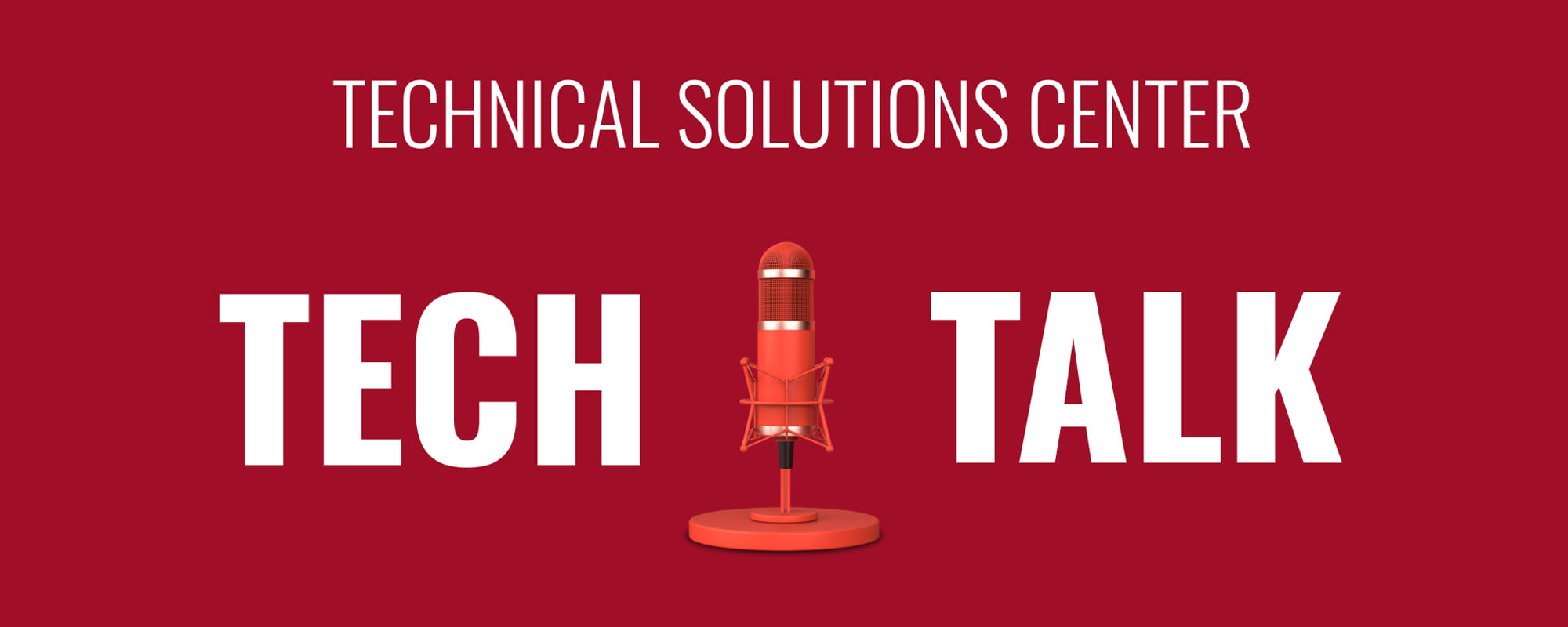Just how much is AI technology set to change how we work?
Our latest report examines the impact of artificial intelligence (AI) on the U.S. workplace and workforce to date, based on recent survey data we’ve collated and comparison with historical insights.
The findings highlight new trends in AI adoption, its impact across various industries, employee perceptions, and the potential future trajectory of AI integration in different industries.
Understanding these dynamics is crucial for businesses aiming to not only navigate the challenges that AI may pose, but also fundamentally benefit from the many opportunities AI technology integration presents. These range from increased efficiency and productivity to improved accuracy.
Historical use of AI in the workplace
AI adoption in the workplace has evolved significantly over recent years.
In 2017, only 6% of U.S. companies utilized AI, primarily concentrated in large organizations within manufacturing and IT sectors, as reported by MIT Sloan. By 2024, new research highlighted that nearly half (44%) of U.S. employees had integrated AI processes into their roles, marking a substantial increase from earlier years.
Familiarity with AI tools like ChatGPT has been especially notable, with 74% of employed Americans reportedly used it for work tasks in 2023, according to a study featured by Fortune.com.
While use of some mainstream AI tools appears to have been already quite widespread, data featured in an OCED report from 2024 revealed a general ”clustering” of more significant AI adoption in industries requiring formal training. This contrasts with a more minimal uptake in sectors that typically don’t require tertiary education.
People who perform non-routine cognitive tasks in white-collar jobs, such as IT professionals, managers, and engineering roles, are said to have been aware of, and leveraging, AI advancements for some time. Conversely, roles relying on manual skills and strength, like cleaners and laborers, have historically reported minimal AI exposure.
These origin patterns started to underline AI’s growing role in reshaping some industries and job functions, with further adoption of this technology in other sectors and roles well underway.

Increased adoption of AI in the workplace
Our new survey with 1,000 working Americans indicates a sharp rise in AI adoption in the last year alone, with the majority (60%) reporting they had used some form of AI as part of their job in 2024.

Notably, 28% of employees engaged with AI for the first time in 2024, while 32% reported longer-term use. An additional 11% anticipate its introduction in their workplace in 2025.
Employees aged 55+ were the most likely to have ”not” used AI at work yet, while employees aged 35-44 are the most likely to be using it already.
The most common uses to date include data analysis (34%), cybersecurity and training (31%), and training and visualization (23%).
The main benefits cited included improved efficiency (22%), 24/7 availability (14%), and its ability to complete mundane or repetitive tasks (10%).
The apparent upward trajectory of AI adoption suggests growing organizational confidence in this technology to enhance productivity and address workforce challenges, such as skill shortages.

Areas of greatest AI adoption
While use of this technology appears to be picking up pace generally, AI adoption does still vary significantly across sectors, roles, and locations.
According to our survey, the U.S cities leading AI integration include San Francisco, where 75% of employees already use it as part of their job). This is followed by Miami (71%), and San Diego (69%), respectively.

Working Americans in the following cities are the most likely to have already used AI as part of their day-to-day job, in some capacity:
- San Francisco (75%)
- Miami (71%)
- San Diego (69%)
- Phoenix (67%)
- New York (64%) / Atlanta (64%)
- Seattle (63%) / Washington DC (63%)
- Charlotte (62%)
- Dallas (61%) / Memphis (61%) / New Orleans (61%)
- Chicago (59%)
- Boston (58%) / Denver (58%)
In general, professional services employees reported more consistent long-term use, with nearly half (46%) of employees leveraging AI for more than a year. This was followed by those in IT (43%). Conversely, customer service roles exhibited minimal adoption, with only 17% engaging AI as part of their work so far.
Legal roles also displayed limited adoption to date, and minimal awareness of perceived utility, with 30% believing that AI is ”irrelevant” to their role.
Of those not already using AI, key areas where employees said they felt they could benefit from AI application in the future included data analysis (35%), training and visualization (32%), customer services (32%), and process automation (30%).


Industry leaders in AI adoption
Industries embracing AI most rapidly include IT and professional services, where nearly half of employees have incorporated AI into their workflows.

The manufacturing sector, despite being slower in initial adoption, now appears to exhibit significant optimism, with 62% of employees leveraging AI tools in the last 12 months.
Within this sector, applications such as cybersecurity (37%) and data analysis (28%) lead the way. Healthcare and education are also poised for growth, with employees expecting expanded AI integration in the coming years.
Transport and logistics present a balanced picture, with 48% adoption to date, and there are stats for applications concentrated in data analysis (42%) and supply chain management (32%). Meanwhile, retail and commerce industries lag in adoption so far, but show promise for future growth. Across industries, AI’s ability to streamline repetitive tasks and enhance efficiency were cited as common drivers of adoption.


AI in the manufacturing sector: Industry focus
As previously mentioned, the manufacturing sector, after a slow start, now demonstrates one of the highest levels of AI adoption, with 62% of employees already utilizing AI in their roles. Among these, two in five (41%) report long-term use, while 22% began using AI for the first time in 2024.
For the 38% of manufacturing employees not yet using AI, 18% expect their employers to introduce it within the next year, although 15% still perceive AI as irrelevant to their job functions (at this point). Among those not yet using AI, the primary opportunities identified include its application in manufacturing processes (54%) and data analysis (31%).
Areas such as training and visualization, customer services, process automation, and process integration each garnered interest from 23% of respondents in this industry. Notably, no employees in this group indicated that AI lacks potential applications in their workplace, highlighting broad recognition of its value.
For manufacturing employees already leveraging AI, its usage spans multiple critical areas. Manufacturing applications dominate at 52%, followed by cybersecurity and IT (37%) and data analysis (28%).
However, adoption in resource management and scheduling remains limited (15%), as does usage in predictive maintenance (13%) and process integration (11%). Accounting and finance, along with legal functions, show negligible AI integration at 0%.
The perceived benefits of AI in manufacturing reflect its potential to transform the sector. Nearly a quarter (22%) of employees cited 24/7 availability as a key advantage, while 20% highlighted improved efficiency and productivity as being a top benefit of AI technology.
AI’s ability to handle repetitive or mundane tasks (15%) and enhance output quality (11%) are also recognized, along with its role in fostering innovation (9%). Reduced error rates (8%) and enhanced safety (1.4%) round out the list of core benefits identified.
Despite AI’s promise, concerns still remain prevalent in manufacturing. 35% of workers in this industry noted they are worried about job losses and skill erosion due to AI integration.
Privacy and security risks (34%) and unforeseen risks from AI flaws (30%) are also significant concerns. Additionally, 28% express apprehension about reduced creativity, while 23% fear AI could decrease productivity rather than enhance it.
Meanwhile, views on AI’s inevitability and impact are divided. While 32% of manufacturing employees believe AI adoption is inevitable, over two-thirds (68%) are either uncertain or disagree.
36% percent see AI as an opportunity for businesses to enhance efficiency, and 32% believe it can take over mundane tasks that humans prefer not to do. However, only 22% perceive AI as posing no threat to their jobs. A similar proportion see it as an entirely positive development. Looking ahead, 28% of employees expect AI to profoundly change the manufacturing sector within the next year, while 24% anticipate significant changes over the next decade. These projections emphasize the ongoing evolution of AI in manufacturing, underscoring both its transformative potential and the challenges of adoption.

AI in the transport and logistics sector: Industry focus
The transport and logistics sector also demonstrates a unique and evolving relationship with AI. Currently, nearly half (48%) of employees in this sector use AI, reflecting a near 50/50 split in adoption.
Of those utilizing AI, half are long-term users while the other half began doing so in 2024, signalling both established adoption and recent growth.
However, a quarter (25%) of employees yet to use AI still view it as irrelevant to their transport and logistics roles. In fact, a greater number believe it will never be implemented in their workplace than those who are expecting its future adoption.
For employees who have yet to use AI, potential application opportunities are widely recognized. Areas such as training and visualization, customer services, and process automation each garnered interest from 75% of respondents from this sector. Additionally, accounting and finance functions saw equal enthusiasm, while marketing and supply chain management were identified by half (50%) as key areas for AI’s potential impact. Importantly, no respondents indicated an absence of potential AI applications, underscoring its perceived versatility.
Among current AI users in transport and logistics, data analysis leads as the most common application (42%), followed by accounting, finance, and supply chain management (32% each). Customer services and cybersecurity/IT each account for 26% of applications, though usage in training, content creation, and recruitment so far remains limited (5%).
Employees recognized several benefits AI can bring to the sector. Improved efficiency and productivity were cited by 23%, reduced error rates by 15%, and 24/7 availability by 13%. Conversely, only 3% felt AI lacked any meaningful workplace benefit, although scalability was not seen as a key advantage by most yet.
Despite awareness of its potential, the sector faces challenges when it comes to attitudes toward AI technology. Half of employees believe AI adoption is inevitable, yet 55% remain unsure or concerned about its impact on careers.
While 30% see AI as a positive development, 50% fear job losses, and 43% worry about unforeseen AI flaws. Privacy risks (30%) and potential inaccuracies (28%) further complicate AI’s adoption, alongside reduced creativity (25%). Still, 13% perceive no significant drawbacks, reflecting a cautious optimism within the sector.
The transformative potential of AI in transport and logistics cannot be overlooked. It remains to be seen whether AI will redefine this industry in time, with possible applications in data-driven decision-making, operational efficiency, and supply chain optimization.
The mixed sentiments among employees highlight the need for transparent implementation strategies, ongoing training, and clear communication to address employee concerns, improve workplace satisfaction, and maximize AI’s benefits.

How RS customer insights compare
Alongside a survey with 1,000 U.S. workers, we also panelled our customers to see if and how their attitudes to AI integration varied with the nationally representative panel.
Our customer data reveals that 34% have used AI in their jobs over the past year, with 10% adopting it for the first time in 2024 and 24% having longer-term experience. Among the non-users, 27% said they view AI as irrelevant to their roles, while 15% anticipate future adoption. These findings are slightly off-kilter with the broader trends, emphasizing the sectoral nuances in AI’s perceived relevance and utility.
RS customers identified efficiency (17%), expanded expertise (15%), and task automation (11%) as key benefits of AI technology to date. However, nearly 23% said they can see ”no clear benefit” in AI adoption within their industry or day-to-day job, reflecting skepticism about its practical value. Concerns about job loss, skill erosion, and privacy risks were prevalent, too.
General employee attitudes and concerns
Looking again at the nationwide data, employee perceptions of AI utility in the workplace vary by department, age, and sector.
IT employees are the most optimistic, with 43% viewing AI as an opportunity for improved efficiency. Across all sectors, the primary drawbacks cited include potential job losses (41%) and privacy risks (33%).

Nevertheless, one-third of employees consider AI integration inevitable, suggesting either cautious optimism or at least acceptance that it is set to become a ”mainstream” element to most jobs in the coming years.

Research undertaken in 2023 revealed that worry about job losses is by no means ”new.” About 40% of workers who were familiar with ChatGPT were concerned the generative AI (GenAI) chatbot would replace their jobs entirely in the future.
Meanwhile, over a third of workers (38%) worried that although the technology may not replace them, it could make them less useful in the workplace. A further 42% of working Americans worried that ChatGPT would make it harder for them to find a new job.
Generational differences between inevitability and acceptance are pronounced, though. Workers aged 35-44 are the most likely to view AI as inevitable (35%), while younger workers are more apprehensive about its impact on their future employability.
Employees aged 18-24, who are most likely to be early on in their careers, expressed heightened concerns about how AI could affect their future job security and even lead to skill loss.
Interviews with workers on the topic of AI (undertaken by the OECD in 2024) revealed similar trends. Case study interviews conducted in parallel suggest that young and older workers believe they are facing different risks from AI integration. Older workers felt they could face preconceived and potentially even prejudicial notions regarding their ability and willingness to engage with this new technology. On the other hand, it was felt that their tenure and seniority ‘”may afford them greater protection from job loss than younger workers.”

In response to these two different types of concerns, a Deloitte study recommends that both generations think about how to adapt and focus on reskilling and AI training to future-proof their careers.

AI job opportunities
One thing is increasingly clear, though: For those workers willing to upskill, there is seemingly plenty of opportunity in the jobs market.
The integration of AI into the workplace is creating a surge in job opportunities across diverse sectors. According to Adzuna, 177,050 advertised jobs in the U.S. currently mention ”AI” in their titles. AI-related roles, therefore, represent approximately 14% of the 8.04 million advertised jobs available in the U.S., reflecting the growing demand for this type of expertise.
IT leads the way with 66,107 open and advertised positions mentioning ”AI” in January 2025, followed by teaching roles (30,830), and catering or hospitality jobs (12,899). Engineering (11,928), sales (8,386), and finance (6,622) also feature prominently. Consultancy, PR/advertising, health, and nursing round out the list, showcasing the broad spectrum of roles benefiting from AI advancements.
Geographically, California dominates AI job postings (23,035), followed by Texas (11,044) and New York (10,953). Locations such as New York City (6,414) and Santa Clara County in Calif. (6,333) also stand out as hubs of AI-related employment.
Compensation for AI-related roles significantly outpaces the average, too. Advertised salaries for AI jobs average $125,444 — a staggering 79% higher than the national average of $69,988 for all roles. This compensation premium highlights the value placed on AI skills and the competitive landscape for talent in this domain. The proliferation of AI-related jobs underscores its transformative impact on the workforce. From IT and engineering to teaching and hospitality, AI’s influence is reshaping the employment landscape, offering lucrative opportunities for skilled professionals while driving innovation across industries.

Looking to the future
AI is expected to transform the U.S. workplace over the next decade. Industries anticipate the automation of various cognitive tasks, creating opportunities for businesses to innovate and create efficiencies. More than one in five US employees we surveyed (22%) believe AI could ”profoundly change the industry they work in over the next decade.”

Slightly fewer (21%) see AI as having a profound effect on the industry they work in over the next year, while 18% said it has already changed their working industry “significantly.”
A report from the RS team in the UK states that integrating AI with automation technologies will enable businesses to enhance productivity and agility, ensuring sustained competitiveness in a rapidly evolving landscape. Experts have emphasized the need for a clear strategy, adaptive workforce training, and collaboration with AI partners, though. Other research also highlights the importance of reskilling programs to address workforce concerns. Deloitte and McKinsey reports emphasize that companies investing in talent development and ecosystem partnerships are better positioned to harness AI’s potential, future-proof operations, and fundamentally thrive in a competitive environment.
Case study – Using AI to improve operational performance
Atlantic Sapphire, a leader in sustainable land-based salmon farming, sought a solution to ensure operational efficiency and prevent system failures in its Florida-based facility. RS introduced the SKF Axios, an AI-driven predictive maintenance system developed by SKF and AWS. This system employs machine learning and advanced sensor technology for real-time condition monitoring, using 3-axis vibration and temperature data to detect anomalies.
The wireless SKF Axios sensors and Power over Ethernet (PoE) hub were swiftly deployed, showcasing simplicity in setup and scalability. Installed on the critical 150-foot Middle Floridian (MF) pump well, the sensors identified erratic vibrations, signalling a potential failure. Subsequent verification and timely intervention prevented a complete saltwater intake shutdown, saving Atlantic Sapphire an estimated $150,000–$200,000 in repair costs.
The system’s robust wireless communication, real-time alerts, and detailed data analysis via mobile and web apps enable proactive maintenance. Atlantic Sapphire has since expanded its deployment, adding sensors across vital systems, with plans to install over one hundred additional sensors and gateways.
By leveraging the SKF Axios, powered by AWS, Atlantic Sapphire has enhanced its operational reliability and sustainability, demonstrating how AI technology can revolutionize maintenance.
Report conclusion
AI’s integration into the U.S. workplace marks a pivotal shift in how businesses operate. While challenges like potential job displacement and skill loss persist, the opportunity for improved efficiency and innovation is immense.
As Scott Jayes, Vice President of Value-Added Solutions at RS, aptly summarized: “AI’s future in the workplace is not just about technology but about transforming how we work and grow as an economy.
“By automating mundane tasks, AI can free up employees to focus on creativity, strategic thinking, and building human connections. However, to unlock its true potential, businesses must prioritize training, ethical implementation, and a culture that embraces innovation without compromising human values. At its core, AI is a tool that can amplify human potential if used wisely. “Our focus should remain on creating a workforce that is not just adaptive but thrives alongside AI, ensuring a future where technology and humanity grow together in harmony.”







